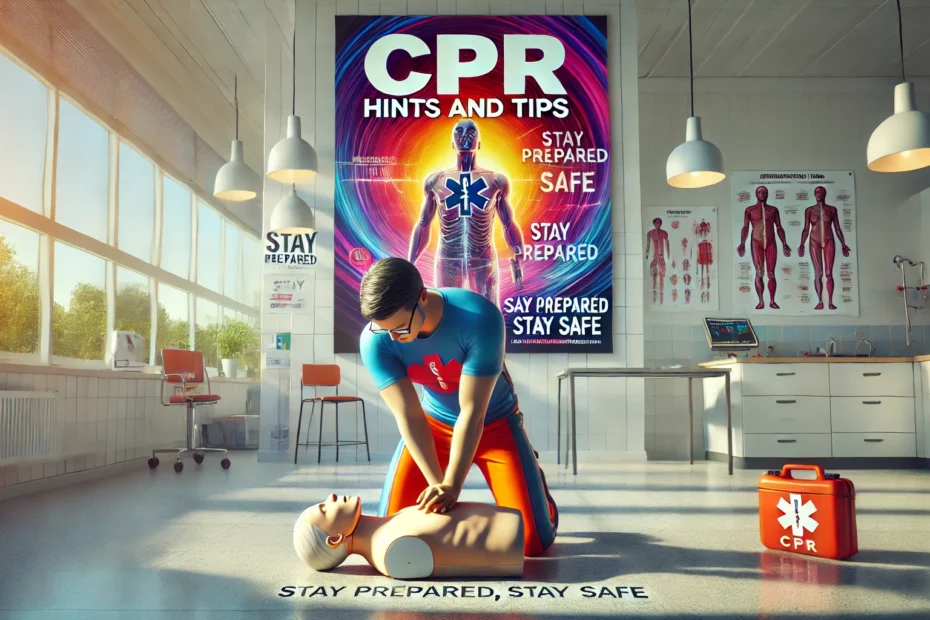CPR (Cardiopulmonary Resuscitation) is one of the most crucial skills that can save a life in an emergency, yet many myths and misconceptions surround it. These misunderstandings can prevent people from learning CPR or responding effectively when someone is in need. In this blog post, we’ll debunk some of the most common myths about CPR and highlight the facts to ensure you’re equipped with the right knowledge.
Myth #1: Only Medical Professionals Should Perform CPR
Fact: CPR is designed to be performed by anyone, not just doctors, nurses, or paramedics. Bystander CPR plays a critical role in keeping someone alive until emergency personnel arrive. Many organizations offer simple courses that can teach anyone how to administer CPR, and it can be just as effective when performed by a trained non-professional. Don’t hesitate to act if you see someone in need—your help could save a life.
Myth #2: You’ll Get in Legal Trouble if You Perform CPR Incorrectly
Fact: This is a common fear, but in reality, Good Samaritan laws protect individuals who step in to help during an emergency. These laws vary slightly by state but generally offer protection to anyone who performs CPR in good faith. As long as you’re trying to help, you’re protected from legal repercussions.
Myth #3: CPR Always Restarts the Heart
Fact: The primary purpose of CPR is not to restart the heart but to maintain blood circulation and oxygen flow to vital organs until professional medical help arrives. In some cases, it can help restore a heartbeat, but the true benefit of CPR is keeping the brain and other organs alive during the critical moments after cardiac arrest. Defibrillators are often needed to restart the heart, but even without one, CPR can double or triple a person’s chances of survival.
Myth #4: You Can Hurt Someone by Performing CPR
Fact: While it’s true that performing chest compressions with the right force can cause rib fractures, the risk of serious injury from CPR is far outweighed by its life-saving potential. Cardiac arrest is life-threatening, and without immediate action, the chance of survival rapidly diminishes. Administering CPR, even if it leads to minor injuries, is far better than doing nothing and risking loss of life.
Myth #5: Mouth-to-Mouth Resuscitation Is Always Necessary
Fact: Hands-only CPR, which focuses on chest compressions without mouth-to-mouth breaths, is now recommended for most bystanders in cases of sudden cardiac arrest. Studies have shown that chest compressions alone can be just as effective in keeping blood circulating, especially in the first few minutes of an emergency. If you’re unsure or untrained in traditional CPR, hands-only CPR can still make a significant difference.
Myth #6: You Can’t Perform CPR on Children or Infants
Fact: While CPR techniques differ slightly for children and infants, you absolutely can (and should) perform CPR on them in an emergency. For infants, you’ll use two fingers for compressions, and for children, you’ll typically use one hand. There are specific training courses that focus on infant and child CPR, and learning these variations can empower you to respond in any situation.
Myth #7: CPR Training Takes Too Much Time
Fact: CPR training is more accessible and less time-consuming than many think. Most certification courses take just a few hours, and many organizations offer online components to make learning even more convenient. These skills are a small investment of time that can have life-changing effects.
Myth #8: I Don’t Need to Learn CPR—EMS Will Arrive Quickly Enough
Fact: In a cardiac arrest situation, time is critical. Every minute without CPR reduces the chances of survival by 7-10%. Emergency medical services (EMS) often take several minutes to arrive, and during that time, bystander CPR can be the difference between life and death. Learning CPR ensures you’re ready to help while waiting for professionals to take over.
Conclusion: Take Action, Save Lives
Now that these myths have been debunked, it’s clear that learning CPR is an essential, life-saving skill that anyone can master. You don’t need to be a healthcare professional to perform CPR, and you shouldn’t let fear or misinformation hold you back from learning how to save a life.
If you’re ready to take the next step and become CPR certified, visit Delphi CPR Training Center for more information. Their courses will equip you with the knowledge and confidence to act in an emergency, ensuring you’re prepared to be the help someone desperately needs.

